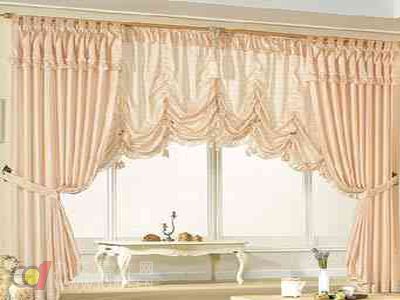Choosing the right curtains involves more than just aesthetics—it's about color perception and emotional impact. Different colors evoke different feelings. Yellow brings warmth, gentleness, and calmness; green represents growth, peace, and a sense of renewal; red adds energy, celebration, and vibrancy; brown offers stability, maturity, and comfort; purple and pink bring elegance, luxury, and a touch of mystery; blue evokes depth, serenity, and openness; and white adds purity, simplicity, and a fresh look.
When selecting curtain colors, it’s important to consider the purpose and character of each room. A living room benefits from warm tones that create a welcoming and luxurious atmosphere. A study or home office is best suited with green, which promotes focus and relaxation. For the bedroom, soft and balanced colors like light blues or pastels help create a peaceful environment. In the dining area, white curtains can complement yellow furniture, while adding white net or lace accents can enhance the overall elegance.

The key to successful curtain selection lies in harmony. The color and texture of your curtains should blend well with your furniture, interior design style, and even the walls, floors, and ceiling. This creates a cohesive and visually pleasing space. However, it’s also essential to consider your personal preferences and how certain colors make you feel emotionally. Some classic color combinations—like red and green, blue and orange, or yellow and purple—can be striking when used thoughtfully.
Keep in mind that even if a color scheme looks good on paper, it may not feel right for long-term use. For instance, if your walls and furniture are in warm yellows, choosing beige or apricot curtains might seem harmonious, but over time, it could feel overwhelming or “glowy.†In such cases, opting for cooler tones like light blue or green can provide a more balanced and calming effect. Similarly, if your walls are pale lavender, using medium-green curtains may look uniform, but it could feel too cold. Instead, choose slightly warmer shades to maintain balance without creating a stark contrast.
Ultimately, the goal is to create a space that feels comfortable and reflects your personality. Don’t rush the decision—take your time to explore different options, test them in natural light, and ensure they align with both your aesthetic and emotional needs.
1. Components of piston rod seal:
Polyurethane, polyformaldehyde, rubber
2. Purpose and function of piston rod seal:
The rod seal belongs to the dynamic seal. It is the seal that moves with the piston rod. It is one of the important components on the hydraulic support.
3. Use position of piston rod seal:
Guide sleeve, piston
4. Working principle of piston rod seal:
It is used at the contact part between the guide sleeve and the outer cylinder to seal the emulsion in the outer cylinder.
5. What effects will be caused by improper use or operation of piston rod seal:
1. Improper selection of cavity support material will wear the cavity and piston rod.
2. The size of the friction pair is inappropriate, causing wear.
3. Improper thread guide angle of cylinder barrel and piston end wear the sealing ring.
4. The seal ring is worn due to improper installation guide angle of the seal.
5. The surface of cavity and piston rod is rough, with scratches and worn seals.
6. The outer cylinder leaks and the jack does not maintain pressure.
Piston Rod Seal,Hydraulic Cylinder Rod Seal,Pneumatic Rod Seal,U Ring Seals,Hydraulic Seals
DG Zhongxingshun Sealing Products Factory , https://www.zxs-seal.com